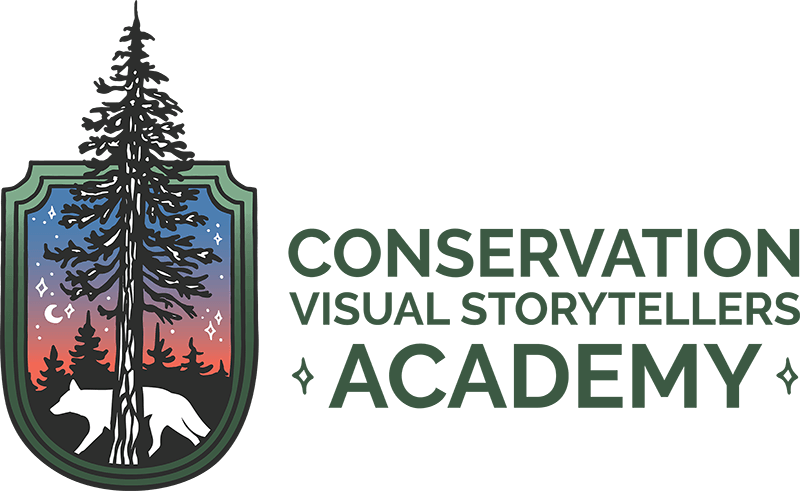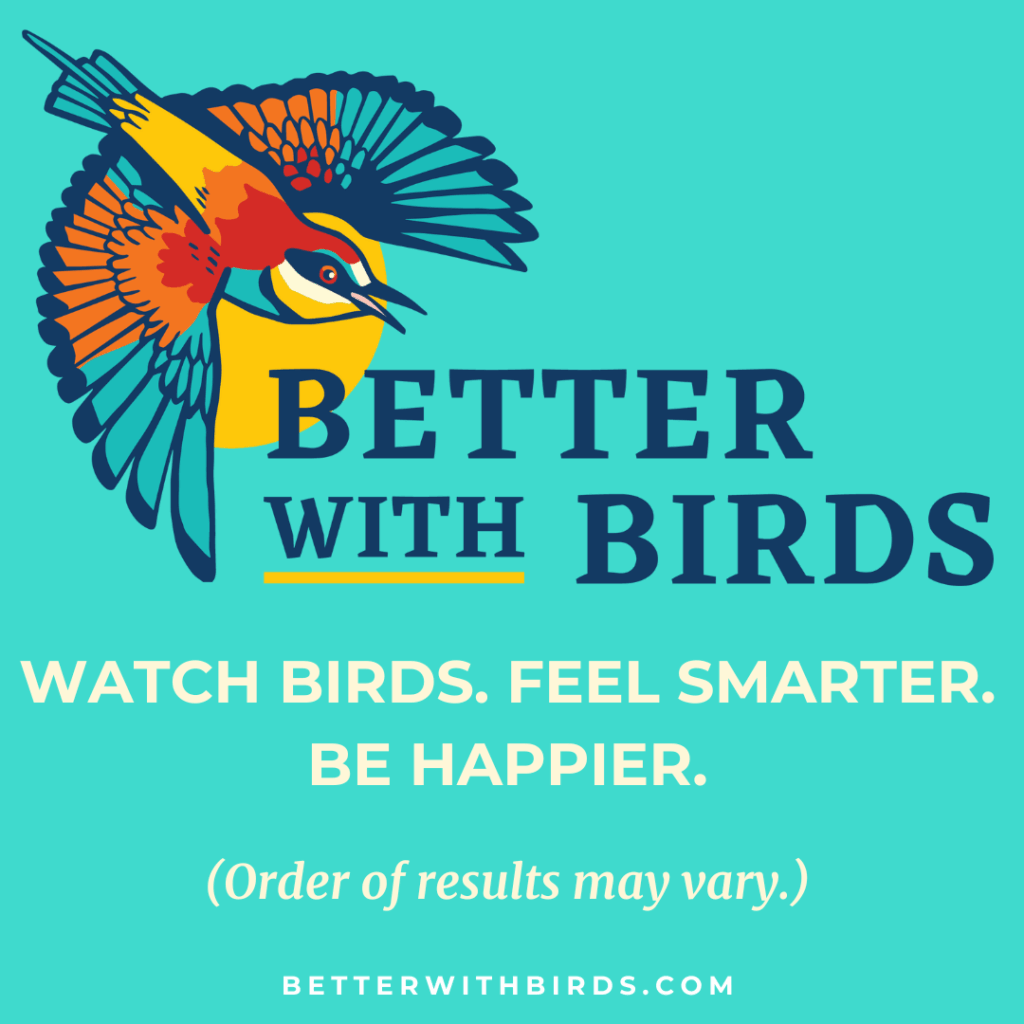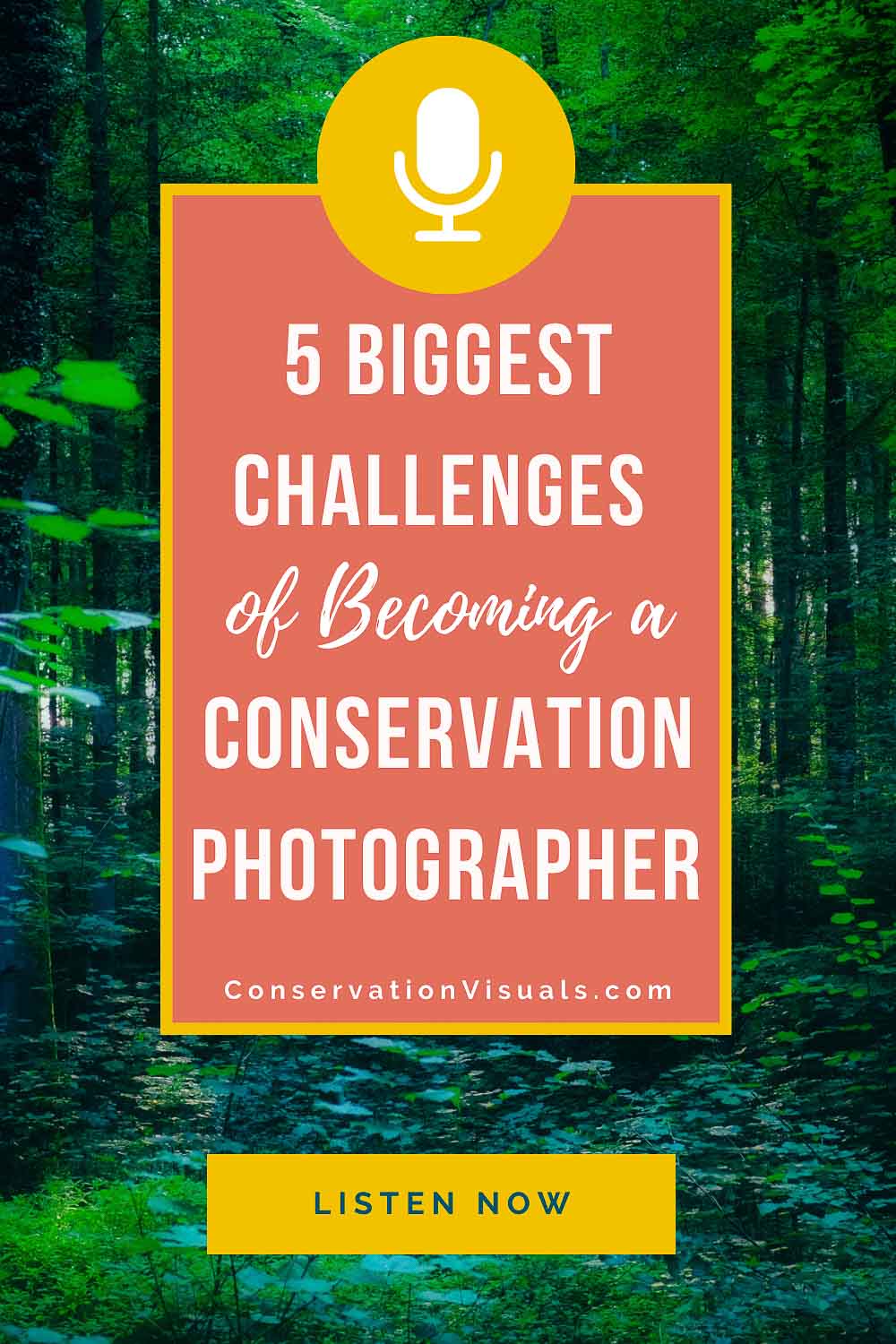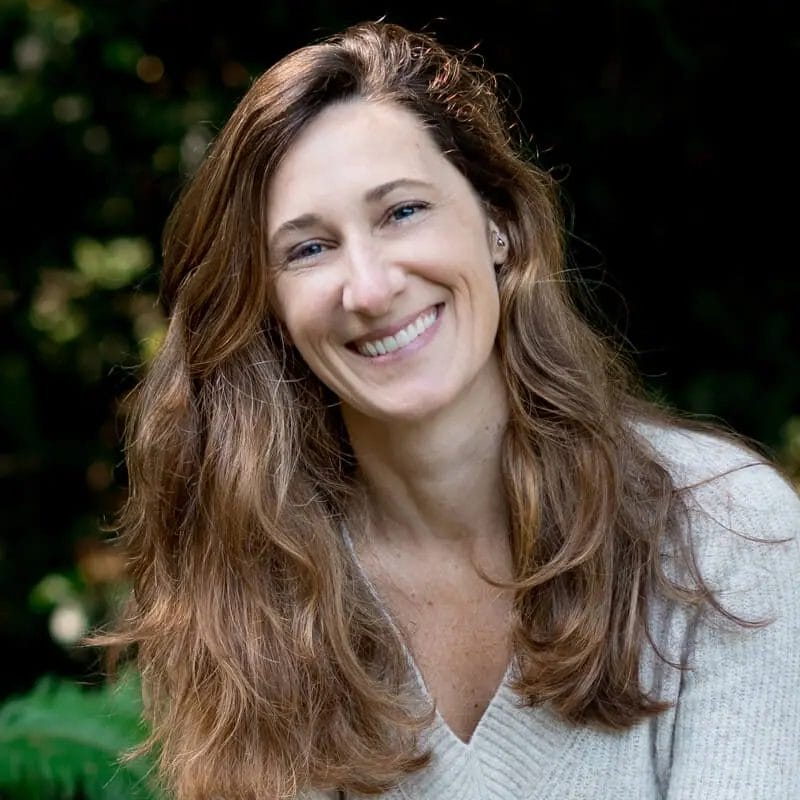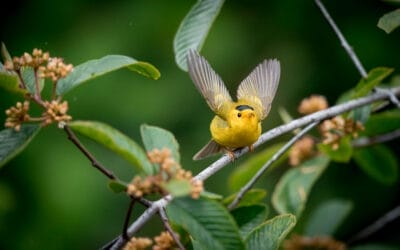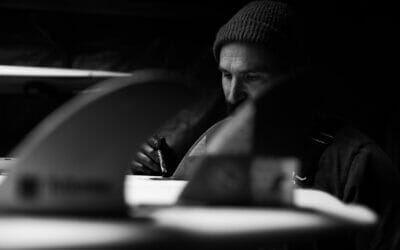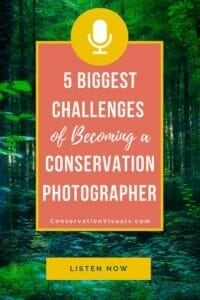It isn’t easy getting started in something new, especially in conservation photography where you’re learning many new skills all at once.
It’s tough, but it’s also completely doable.
Here are the common sticking points when you’re starting out and strategies for blowing past them and finding success.
Starting out in conservation photography can feel a little bit like a marathon race…
through a forest…
with fallen logs across your path…
and branches thwapping your face…
and really cold creeks to wade across that have those slippery algea-covered ankle-twisting cobblestones at the bottom…
and then there’s the bogs…
And it’s all so much fun! Even the difficult bits. Because getting to the other side of those difficult bits is exhilarating.
But it’s helpful if you have some strategies in place for when you do hit those obstacles, so you don’t get too frustrated, or worse, stop all forward progress. Even the most prepared of us still appreciate a few insider tips so that those problem areas can be navigated through or avoided altogether.
So today we’re going to tackle five common hurdles when starting out on this wild and entertaining run, and strategies for leaping them.
Hurdle 1: Thinking your conservation photography story is too small to make a “real” impact
I’ve noticed a trend with emerging conservation photographers when I ask what they’re working on. I often hear things like:
“Well, I’m just working on something near home”
“I don’t know what I really want to focus on so I’m only doing XYZ”
“I started working on XYZ, but I don’t really know…”
Many inspired but inexperienced photographers are quick to brush away their work as if it is unimportant, or a stepping stone, or not “real” conservation photography work.
I’m setting the record straight right now. Your work IS important. No matter where you are in your journey. Whatever you’ve chosen to focus on right now, even if it is documenting the bugs if your backyard, it is important.
What is a “real” impact, after all? It is changing one person’s behavior or perception on an issue through your images. That’s all it takes.
What if through beautifully documenting the bugs in your backyard and holding an exhibit at your local library, you inspire one person to transition their yard to a pollinator-friendly garden? Think about what an impact that makes to thousands of little invertebrates. Well done!! It is an achievement to celebrate.
Everyone starts somewhere, and that somewhere is important.
❂ LEAP:
Every time you post an image from your photography story or project to social media, include an educational, engaging caption.
Then pay close attention to the positive responses.
Write down the responses that are particularly encouraging, and post them somewhere obvious like above your desk, on the bathroom mirror, or on the cover of your daily planner.
Use that as a reminder that your work is influential now and worth pouring your heart into.
Hurdle 2: Going too broad on your conservation photography story topic
When you’re passionate about something, it’s exciting to keep connecting the dots until you see one huge picture in all its glorious complexity.
But, when you’re starting out and haven’t tackled a big project before, that complexity shifts into overwhelm awfully fast.
By going big, you risk stopping forward progress altogether as confusion and lack of a clear path forward take their toll. By going broad, you risk losing sight of the core reasons you’re working on a project or what exactly it is you’re working toward.
These aren’t insurmountable challenges. But when you’re just starting out, they can do some real damage to your confidence, and right when you need that confidence the most.
❂ LEAP:
Get narrow in your photography focus, and flourish.
The thing you’re passionate about might indeed be a large issue. However, if you can narrow it down to one small piece, with one defined goal, you’ll stay energized, focused and importantly, you’ll keep moving forward with clarity and enthusiasm.
It’s in that zone that you really start to develop who you are as a photographer.
Hurdle 3: Taking things too seriously in your conservation visual storytelling
The world is in a pretty bad spot of trouble right now. And we all need to wake up and make some big changes.
But… hammering away at the downside of every issue isn’t going to win people over and it’s the fastest route to maxing out with compassion fatigue both in your audience and yourself.
There’s a reason why Jon Stewart, Trevor Noah and Stephen Colbert are a welcome relief from the typical news cycle.
Humor helps us all take a break from the awful, recharge, and refocus.
Humor makes problems approachable. Humor gives us room to breathe, and remember why it’s worth fighting the good fight.
Here are three examples of excellent conservation photographers who aren’t afraid to bring humor to the table, and manage to make a huge impact on audiences:
- Morgan Heim and Deer 139
- David Herasimtschuk and March of the Newts
- Clay Bolt and Ghost in the Making
The list could go on.
I suggest checking out how they’ve used humor within a larger topic. It breaks up the doom and gloom so that problems don’t seem insurmountable.
❂ LEAP:
Keep humor as a highlight, even in (or especially in) the darkest stories.
Bringing your most earnest self to the work is fantastic, but be sure to temper that with joy, silliness, and the brighter side of being alive.
Humor keeps people curious, keeps them asking questions and thinking critically.
And importantly, it keeps you from burning out.
Hurdle 4: Getting over the giving-away-images habit
It’s really common for emerging conservation photographers to provide images to organizations or publications for free.
It comes out of kindness, generosity, and the desire to help in some way, as well as establish positive vibes with organizations you want to work with in the future.
I get it. I promise, I fully get it. But here are three truths:
- Exposure in the form of a byline does NOT bring in paychecks.
- Working for free at the beginning creates an expectation you’ll *always* work for free.
- You giving away images takes a paycheck away from you AND all other professional photographers who could have been hired to fill the image need.
I’ve talked a lot about why I don’t give away my images, and quite a few other professional conservation photographers have weighed in on this as well. So I won’t keep pounding away at it here.
If you’re feeling wishy-washy about asking for money because you’re new, or don’t know how to respond to requests for free images, I have a swipe file for you that takes the heavy lifting out of the situation. But the important thing is, if you:
- want to become a professional photographer or
- you want to be supportive of professional conservation photographers or
- you want to ensure that the highest quality standards for ethical conservation photography are maintained or
- you want to ensure that a wide variety of perspectives on conservation issues make it to print or
- pretty much any other great reason for being valued…
Then it’s time to get out of the giving-away habit.
❂ LEAP:
Your photography work is of value. Own that fact.
Be highly selective in when and how you donate work, and focus on asking for what you know you’re worth for all your collaborations.
Hurdle 5: Focusing too much on species and not enough on people in your conservation photography
Many of us get into this niche because we adore wildlife and wild places. We want to save what is in decline, shine a spotlight on problems and fix them.
And a lot of us just simply prefer spending time with wild things than spending time with people.
But… Species or habitats at risk are usually that way because of human impacts. And it’s usually known that there’s a problem because people point it out.
Taking humans out of the equation takes away a huge portion of the story of that species or place.
Plus, people relate to people. Connecting an audience to an issue typically means including the stories of people who are affected by the species, its presence or decline, the study of it or the conservation of it.
All the best conservation stories are those that include the human side of the story, and do just as beautiful of a job photographing the human characters as the wild characters.
❂ LEAP:
Begin documenting people as part of your daily photography practice.
It is one of the best things you can do to improve your audience engagement on your issue, and to improve your visual storytelling skills in general. The researchers, the community members, those who threaten a species or rally behind it.
This is where you move beyond a picture-taker to a story-maker.
And remember this one thing as you move into documenting people: no one is the enemy.
We’re all in this together, even if we have wildly different opinions about the world.
Our task as conservation photographers is to document, with the hope of changing behaviors for the better of all.
To do so, we have to approach all people with understanding, empathy, the desire to connect, and to find solutions.
With this mindset, you’ll be on a path toward making a difference.
